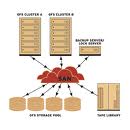Spatiotemporal learning, which aims at extracting spatiotemporal correlations from the collected spatiotemporal data, is a research hotspot in recent years. And considering the inherent graph structure of spatiotemporal data, recent works focus on capturing spatial dependencies by utilizing Graph Convolutional Networks (GCNs) to aggregate vertex features with the guidance of adjacency matrices. In this paper, with extensive and deep-going experiments, we comprehensively analyze existing spatiotemporal graph learning models and reveal that extracting adjacency matrices with carefully design strategies, which are viewed as the key of enhancing performance on graph learning, are largely ineffective. Meanwhile, based on these experiments, we also discover that the aggregation itself is more important than the way that how vertices are aggregated. With these preliminary, a novel efficient Graph-Free Spatial (GFS) learning module based on layer normalization for capturing spatial correlations in spatiotemporal graph learning. The proposed GFS module can be easily plugged into existing models for replacing all graph convolution components. Rigorous theoretical proof demonstrates that the time complexity of GFS is significantly better than that of graph convolution operation. Extensive experiments verify the superiority of GFS in both the perspectives of efficiency and learning effect in processing graph-structured data especially extreme large scale graph data.
翻译:从收集的时空数据中抽取时空相关性的随机边际学习是近年来的一个研究热点。考虑到时空数据的内在图形结构,最近的工作重点是通过利用图层演变网络(GCNs)收集空间依赖性,以对相邻矩阵的指导来综合脊椎特征。在本文中,我们通过广泛和深入的实验,全面分析现有的时空图学习模型,并揭示,以审慎设计战略提取匹配矩阵,被视为提高图表学习绩效的关键,在很大程度上是无效的。同时,根据这些实验,我们还发现集合本身比利用图层突变网络(GCNs)收集空间依赖性空间依赖性特征的方法更为重要。有了这些初步研究,一个新的高效的无偏偏偏空空间空间学习模块以层标准化为基础,用于在波地平面图学习中捕获空间相关性。拟议的GFS模块模块可以很容易地插入现有的模型,用以取代所有图形平面演化组件。严格理论证据显示,在GFS系统系统巨型图中,特别是GFS系统巨型图模型操作中的时间复杂性比GFS的GFS模型规模模型操作要好得多。




